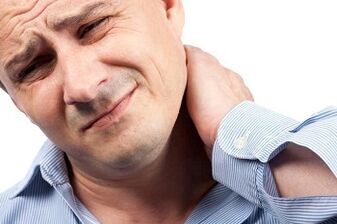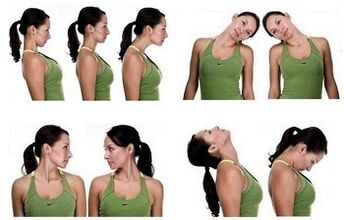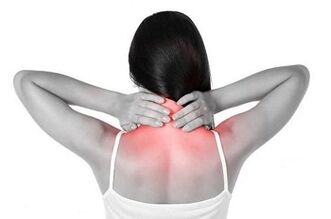
The tendency to develop degenerative-dimensional spine damage is steadily increasing every year and all because the problem of subdivision and motivation is acute due to urbanization.Damage to the cervical spine causes frequent, various headaches and a sense of stiffness in the throat and arms.Today our issue is the causes, symptoms and the treatment of cervical osteochondination.
The reasons for the development of cervical osteochondicity
Speaking about the causes of degenerative damage to the cervical spine, genetic, toxic, metabolic, endocrine, infectious and others can be mentioned.However, in the first place you can put a sedentary lifestyle and sit on the computer, the office and driving.
Frequent pressures that inadvertently make the dog's posture, which leads to a violation of the blood vessels of the nerve neck, helps to help this pathology.
Symptoms of throat pain should not be ignored, as this leads to the progression of the disease and the development of such complications as marginal care, spine syndrome, anterior staircase syndrome and Roying syndrome.
For anatomical structure
Now let's look at what anatomical and physiological characteristics of the cervical spine structure contribute to the development and evolution of osteochondry:
- The part of the cervix is the most mobile part of the spine.Since they are possible in all types of movements in this, this increases the risk of hypoglycaemia and frequent violations.
- The spine takes place on the channel formed in the holes of the transverse processes of the vertebrae.It is the blood of the brain, the acoustic organs, the spinal nerve and the cerebellum.With the development of degenerative metaphorical changes, the artery and nerve can be tightened in this section.
- In the cervix area, the intervertebral discs are not everywhere between the vertebrae.At the front, the vertebrae are associated with joints, which can cause joints to be subjected.
- The holes in the three lower cervical vertebrae are triangular in shape and with the development of bone tissue with osteochondria, nerve roots can violate.
- Throughout the cervix, vegetable ganglia are located.
These features will help us present the mechanism for the development of cervical spine complications.
Mechanisms for developing changes in cervical spine

The pathological process begins on the intervertebral disc with the loss of moisture with a disc core of experience.The fibrous ring of the disc is gradually thinner, its elasticity decreases and microwaves occur.
As a result, the disc loses its ability to correct, depreciate and support.The load on the lower vertebrae is gradually increasing, after which the vertebra itself is involved in the process.
Small defects occur in it and osteophytics (excessive bone increases) increase to withstand an increased load.
With the development of the bone tissue, the nerve roots are pressed along the rear wall of the vertebra and if the vertebral artery is violated on the side surface.
Undergrounds in the joints occur due to a violation of stability between the vertebrae.This leads to a compensatory intensity of the throat muscles, which helps maintain cervical vertebrae in normal position.
When the muscles are tired, the load on the vertebrae increases again, which leads to the progression of the disease.Thus, a vicious circle is formed in which the spasmodic muscles and damaged vertebrae adversely affects each other and lead to deterioration of the patient's condition.
Based on the pathological mechanisms, symptoms of the disease are formed.Thus, the squeeze of nerve roots is manifested by severe paroxysmal pain along the violated nerve.
And when squeezing the spine, the symptoms associated with the decrease in blood flow to the brain, namely: the noise in the ears, the dizziness and the headache, appear in the first place.
The main symptoms of cervical osteochondicity.
The main symptoms of cervical osteochondicity are divided into 3 groups:
The first group of symptoms - pain
It manifests itself in form:
- Local pain in the back of the head/neck.
- Radiation pain, which extends to the right or left, can also go to the fingers, the brush itself, the forearm and even to be detected in the shoulder joints.
This pain can be cunning and stable, annoying and spreading throughout the neck or hand.Or it is a local more acute shot pain that appears as a result of the nerve root chewing gum.
The second group of symptoms is motor disorders
First of all, it is the rigidity of the neck and neck muscles, as a result of which it is impossible to turn or lean the head normally or make any movement in the cervical spine.
In addition, this is a limitation of shoulder joint mobility, called shoulder -diploma syndrome.It is also possible to spread throughout the hand, including the numbness of the fingers, the numbness of the hands and the numbness along the side surface of the shoulder or forearm.
The third group of symptoms are herbal vascular events, events from vessels
During this process, either a spasm of the blood vessels or the spine sting occurs.As a result, such symptoms of cervical osteochondrication can occur as headaches, dizziness, flickering the "flies" in front of the eyes.
There may also be hearing dysfunction - the noise in the ears and the feeling of a "sulfur plug" in which a person does not hear well.These symptoms belong to the spinal artery syndrome.
Methods of traditional cervical osteochondal treatment

Modern medicine offers many methods of treating degenerative dystrophic spine lesions.Among them, they distinguish: treatment with drugs, manual therapy, folk remedies, therapeutic natural culture (exercise therapy) and in very extensive cases resort to surgical treatment.The effectiveness of treatment depends on the stage of treatment and a cluster of selected methods that have begun.
Treatment should first of all aim to normalize the muscular muscle tone.The action of other means aims to remove inflammation and pain in the field of pathological change.
An important point in the treatment of osteochondrication is a good comfortable dream, for which experts recommend the use of an orthopedic pillow.
In the early stages of developing the disease, the use of massage in an experienced specialist and this will be effective.This method will help relax the spasmodic muscles and stop the pathological process.
Medical physics
The treatment of osteochondrication should include physiotherapy exercises in the form of a gymnastics or morning hygiene.When performing a treatment assembly, keep the following recommendations:
- Put comfortable clothes and shoes.
- So that there is no lack of difficulty breathing, alternative ordinary breathing exercises.
- The load should be gradually increased and if he began signaling complaints from the cardiovascular system during the lesson, then stop exercising and seek advice to the doctor.
- If the pain appeared in the spine of the cervix during the lesson, then replace them with relaxation and stretching exercises.
- During the lesson, check your overall source, breathing and pulse.
- If your hand and load exercises cause pronounced pain, then abandon them for a while.
- The complex of the physical exercises of therapeutic exercises must be agreed with the doctor.

The following effects are expected from physiotherapy exercises:
- Strengthening the throat muscles,
- Blood flow recovery;
- Increased vertebral mobility.
- Increase the volume of movements in the cervical area.
- To get rid of the pain and restoration of the injection.
- Prevention of exacerbations.
Medication
Most neuropathologists and other experts do not represent the treatment of cervical spine without medication.The most popular are drugs from a group of non -serpeal anti -inflammatory drugs (NSAID), which are used in the form of injections, tablets, gels and ointments.
Non -hypotheid anti -inflammatory drugs relieve pain, inflammation and relief swelling, as a result, the tone of the throat muscles is restored, metabolism in the affected area improves and nerve roots and blood vessels are released.
It is advisable to use medicines from a group of muscle relaxants, which also effectively relieve muscle spasm and at the same time restore their tone.However, medicines should be used with caution, especially in allergies.

Preparations from the corticosteroid group have gained good reviews in the treatment of cervical spine.
Infusion drug is very popular due to its anti -inflammatory and neuroprotective effects.
If the treatment described is not effective, then they resort to the use of paranormal exclusion with painkillers or steroids.
How to cure cervical osteochondria with non -traditional methods
Supporters of non -traditional treatment methods can use the following treatment methods.
- AcupunctureIt helps to save the patient from pain, relieve swelling and relax the spasmodic muscles, as well as eliminate the functional compression of the nerves and arteries.If the fingers are tangled in the hands, it is advisable to place the needles in biologically active spots on the arm and sink of the ear.
- Manual treatmentIt helps to restore normal blood flow to the throat, relieves muscle spasms and releases nerves.The stretching of the spine must be performed by a specialized specialist with great care.
- Hirudotherapy (leech treatment)It is a cheap and quite effective method of treatment.The procedure consists of the placement of lects for biologically active points, which should be repeated by 10 sessions.This method helps to restore blood circulation to the cervix area, to relieve swelling and inflammation.
- Supreme massageIt consists of the effects of fingers on biologically active signs and helps to relieve muscle spasm, improve blood circulation, relieve swelling, pain and inflammation.
- Popular methodsYou can use it successfully at home.These are various decoction and infusions that can be prepared by yourself (infusion of flawless wood, lilac infusion, garlic infusion).The therapeutic baths of mint, chamomile, sage, rhizomes of Kalamos have a good effect.

After the above methods of treatment and familiarity with the mechanisms of developing the disease, decide to contact your problem: to a neuropathologist or a private clinician.


















































